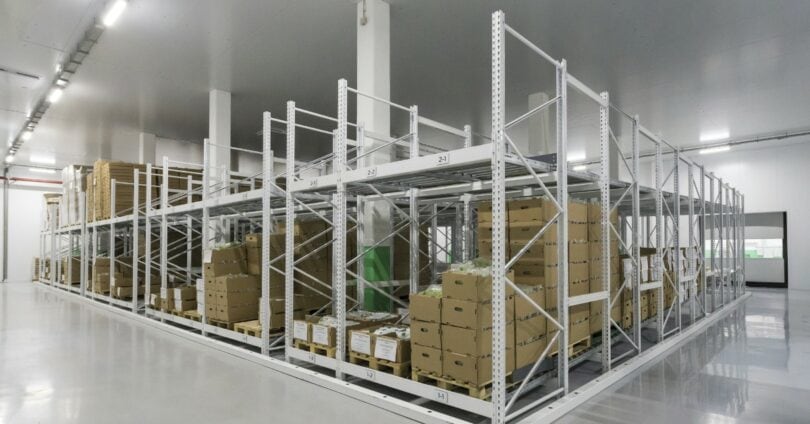Businesses require well-organized warehouse storage systems to manage inventory efficiently. Installing a warehouse mezzanine platform can vastly increase usable storage capacity. These raised platforms create a “second floor” to make the most of vertical airspace that would otherwise go wasted. Companies that install warehouse mezzanines can optimize their facilities to accommodate inventory growth for years.
The Benefits of Mezzanines in Warehouses
Warehouse mezzanines provide numerous advantages over other storage expansion options:
Cost-Effective Method to Increase Capacity
Constructing an entirely new warehouse or expanding an existing structure can cost millions. Mezzanine systems provide similar storage capacity increases at a fraction of the price. The modular designs allow for customization to fit the available space perfectly.
Quick Installation with Minimal Business Disruption
It generally takes just days or weeks to install a prefabricated mezzanine system. The warehouse can continue operations with minimal slowdowns throughout the process. This compares favorably to the months of construction time required for facility additions.
Flexible Configuration Options
Mezzanines can take almost any shape to maximize storage density. Platforms can wrap around support columns or align with walls. Configurations with multiple stairway access points are also possible. The modular components make reconfigurations simple if the business needs to change.
Increased Storage Density
The platforms minimize wasted vertical space, often doubling or tripling usable storage footage. Companies can optimize the area to accommodate more racking and inventory per square foot. This helps warehouse operations become more efficient.
Safe Accessibility
Pre-engineered warehouse mezzanines include integrated stairways, guardrails, toe kicks, and gates. These safety features allow workers to access the platforms easily while preventing accidents. The modular components also meet regional building codes.
Key Factors When Planning a Warehouse Mezzanine
Installing a mezzanine platform is a major infrastructure decision requiring careful planning aligned with business objectives. Several key factors require consideration:
Space Requirements
The mezzanine footprint and configuration must maximize storage square footage while leaving adequate clearance zones. Prioritize space directly above high-traffic areas like shipping docks where inventory moves rapidly.
Weight Capacities
Engineers must evaluate the warehouse’s roof trusses, beams, columns, and foundation to handle mezzanine loading. Material weights, racking systems, inventory loads, and worker occupancy combine to determine structural requirements.
Access Needs
Stairways, lift systems, ladders, and guardrails ensure platforms remain easily accessible without compromising worker safety. Consider where employees will frequently need to reach inventory when positioning the access points.
Building Codes
Local construction codes dictate minimum requirements for mezzanine specifications like egress, lighting, sprinklers, electrical wiring, and materials. Reputable mezzanine companies design systems that are fully compliant for the installation region.
Future Flexibility
Business needs change, and an ideal mezzanine design accommodates some reconfigurations. Prioritizing modular components allows for partial disassembly to resize platforms or create layout variations.
Mezzanine Construction Materials
Mezzanines built from steel provide extreme durability and customizability to suit almost any application. The following materials serve various roles:
Structural Steel
The anchoring posts, columns, and horizontal i-beams comprising the fundamental skeleton must withstand considerable loading stresses. Structural steel has very high strength-to-weight characteristics.
Metal Decking
Corrugated sheet steel decking panels provide the flooring layer. These connect to the i-beam supports below using welds or mechanical fasteners. Durability and fire resistance make it ideal for mezzanine decking.
Railings and Gates
Guardrails, handrails, toe guards, and access gates promote safe working conditions. Steel wire mesh, cable, or rod assemblies attach to posts at the platform edges. Gates across stairways prevent accidental entry when the mezzanine is not in use.
Fire Protection
Fire suppression equipment like sprinklers and alarms integrate with the mezzanine. This balances safety without weakening the structure through excessive penetrations. Fire retardant paints, boards, and curtains also help contain fires.
Warehouse Mezzanine Loading Capacities
The mezzanine’s physical size and weight capacity must suit the inventory items and other loads. Storage capacity correlates directly with the platform’s structural design strength:
Dead Loads
“Dead loads” comprise the weight of all permanent mezzanine construction components plus accessories like lighting, sprinklers, and racking systems. This determines the minimum capacity requirement.
Live Loads
“Live loads” include transient moving loads like worker foot traffic, forklifts, and the palletized inventory itself. Structural engineers use occupancy rates and item weights to calculate live loading minimums.
Concentrated Loads
Racking posts, wheel loads, and heavy equipment create concentrated point loads. Load distribution methods like capping beams strengthen the floor to prevent damage.
Environmental Impact Loads
Platform designs account for location-specific environmental loads like earthquake forces, wind shear, and snow accumulation. Critical earthquake zones or coastal regions often require additional bracing.
Types of Warehouse Mezzanine Designs
Mezzanines take different forms depending on the types of inventory stored and overall space objectives. Common variants include:
Roll Formed
Roll formed mezzanines provide heavy load capacities using panels made from solid steel components. The 150+ pound panels handle over 250 pounds per square foot when installed over minimum 25-foot spans. This strength comes at the cost of flexibility – roll-formed platforms cannot be reconfigured.
Structural Bolt Together
As the name suggests, this style bolts together for quick assembly. The joints between horizontal i-beams and columns have impressive load ratings, allowing partial reconfiguration. However, span lengths tend to be less than structurally welded systems.
Structurally Welded
All joint connections in structural welded mezzanines use full-penetration welds to fuse pieces together permanently. This produces seamless connections with the highest shear strength and longest span capabilities. They have the lowest per-square-foot cost but no flexibility.
Safety Considerations for Warehouse Mezzanines
After installing the storage platform, certain safety precautions and equipment remain vital:
Guardrails
Mezzanines must feature at least 42 inches high guardrails with intermediate rails and 4-inch toe boards. This prevents workers from accidentally falling from open edges. Gates guarantee no unauthorized entry.
Fire Equipment
Fire sprinklers, extinguishers, alarms, and signage help prevent uncontrolled warehouse blazes. Employees need adequate training for proper response and evacuation in emergencies.
Load Postings
Safely using the full structural capacity requires clear load postings. Signage must indicate uniform storage densities and concentrated load limits. Workers must distribute pallets and equipment accordingly.
Equipment Inspections
Frequent safety inspections check for damage, leaks, or other deficiencies. This helps spot corrosion, cracked welds, loose components, and problem areas before they cause accidents. Annual structural engineer reviews may also be prudent for older mezzanines.
Conclusion
Installing a warehouse mezzanine storage platform is an efficient way for growing businesses to expand inventory capacity within an existing warehouse. Mezzanine systems require careful planning and load testing during design but provide customized storage density once erected. Frequent safety inspections ensure these incredibly useful platforms continue operating safely for years. With some forethought and expertise, mezzanines can give companies the extra space they need while avoiding the trouble of constructing entirely new facilities.









